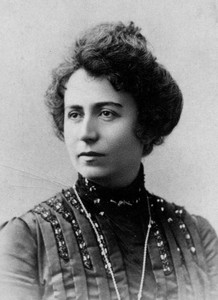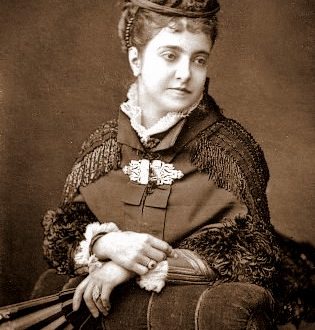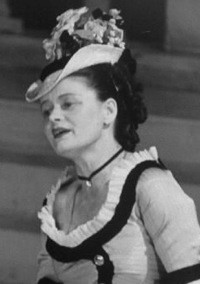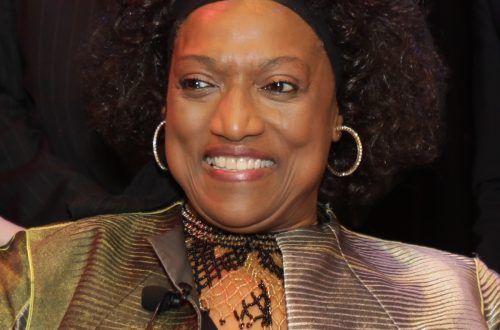
Antonina Nezhdanova |
Antonina Nezhdanova

Her phenomenal art, which delighted several generations of listeners, has become a legend. Her work has taken a special place in the treasury of world performance.
“Unique beauty, the charm of timbres and intonations, the noble simplicity and sincerity of vocalization, the gift of reincarnation, the deepest and most complete comprehension of the composer’s intent and style, impeccable taste, the accuracy of imaginative thinking – these are the properties of Nezhdanova’s talent,” notes V. Kiselev.
Bernard Shaw, stunned by Nezhdanova’s performance of Russian songs, presented the singer with his portrait with the inscription: “Now I understand why nature gave me the opportunity to live to be 70 years old – so that I could hear the best of creations – Nezhdanova.” The founder of the Moscow Art Theater K.S. Stanislavsky wrote:
“Dear, wonderful, amazing Antonina Vasilievna! .. Do you know why you are beautiful and why you are harmonious? Because you have combined: a silvery voice of amazing beauty, talent, musicality, perfection of technique with an eternally young, pure, fresh and naive soul. It rings like your voice. What could be more beautiful, more charming and irresistible than brilliant natural data combined with the perfection of art? The latter has cost you enormous labors of your entire life. But we do not know this when you amaze us with the ease of technique, sometimes brought to a prank. Art and technology have become your second organic nature. You sing like a bird because you cannot help but sing, and you are one of the few who will sing excellently until the end of your days, because you were born for this. You are Orpheus in a woman’s dress who will never break his lyre.
As an artist and a person, as your constant admirer and friend, I am surprised, bow before you and glorify and love you.
Antonina Vasilievna Nezhdanova was born on June 16, 1873 in the village of Krivaya Balka, near Odessa, into a family of teachers.
Tonya was only seven years old when her participation in the church choir attracted a lot of people. The girl’s voice touched the fellow villagers, who said admiringly: “Here is a canary, here is a gentle voice!”
Nezhdanova herself recalled: “Due to the fact that in my family I was surrounded by a musical environment – my relatives sang, friends and acquaintances who visited us also sang and played a lot, my musical abilities developed very noticeably.
Mother possessed, like father, a good voice, musical memory and excellent hearing. As a child, I learned from them to sing by ear many different songs. When I was an actress at the Bolshoi Theater, my mother often attended opera performances. The next day she quite correctly hummed the melodies she had heard from the operas the day before. Until a very old age, her voice remained clear and high.
At the age of nine, Tonya was transferred to Odessa and sent to the 2nd Mariinsky Women’s Gymnasium. In the gymnasium, she stood out noticeably with her voice of a beautiful timbre. From the fifth grade, Antonina began performing solo.
An important role in the life of Nezhdanova was played by the family of the director of the People’s Schools V.I. Farmakovsky, where she found not only moral support, but also material assistance. When her father died, Antonina was in the seventh grade. She suddenly had to become the backbone of the family.
It was Farmakovsky who helped the girl pay for the eighth grade of the gymnasium. After graduating from it, Nezhdanova was enrolled in a free vacancy as a teacher at the Odessa City Girls’ School.
Despite the hardships of life, the girl finds time to visit Odessa theaters. She was struck by the singer Figner, his clever singing made an amazing impression on Nezhdanova.
“It was thanks to him that I had the idea of learning to sing when I was still working as a teacher in one of the Odessa schools,” writes Nezhdanova.
Antonina begins to study in Odessa with a singing teacher S.G. Rubinstein. But thoughts about studying at one of the capital’s conservatories come more often and more insistently. Thanks to the help of Dr. M.K. Burda girl goes to St. Petersburg to enter the conservatory. Here she fails. But happiness smiled at Nezhdanova in Moscow. The academic year at the Moscow Conservatory has already begun, but Nezhdanova was auditioned by the director of the conservatory V.I. Safonov and singing professor Umberto Mazetti. I liked her singing.
All researchers and biographers are unanimous in their appreciation of the Mazetti school. According to L.B. Dmitriev, he “was an example of a representative of the Italian musical culture, who was able to deeply feel the peculiarities of Russian music, the Russian performing style and creatively combine these stylistic features of the Russian vocal school with the Italian culture of mastering the singing sound.
Mazetti knew how to reveal to the student the musical riches of the work. Brilliantly accompanying his students, he captivated them with the emotional transmission of the musical text, temperament, and artistry. From the first steps, demanding meaningful singing and emotionally colored sound of the voice, he simultaneously paid great attention to the beauty and fidelity of the formation of singing tone. “Sing beautifully” is one of Mazetti’s basic demands.”
In 1902, Nezhdanova graduated from the conservatory with a gold medal, becoming the first vocalist to receive such a high distinction. From that year until 1948, she remained a soloist with the Bolshoi Theatre.
On April 23, 1902, the critic S.N. Kruglikov: “The young debutante performed as Antonida. The extraordinary interest aroused in the audience by the novice actress, the enthusiasm with which the public exchanged impressions about the new Antonida, her decisive success immediately after the brilliant, easy performance of the exit aria, which, as you know, belongs to the most difficult numbers of opera literature, give every right to be confident that Nezhdanov has a happy and outstanding stage future.”
One of the favorite partners of the artist S.I. Migai recalls: “As a listener of her performances in Glinka’s operas, they gave me special pleasure. In the role of Antonida, the image of a simple Russian girl was raised by Nezhdanova to an extraordinary height. Every sound of this part was imbued with the spirit of Russian folk art, and every phrase was a revelation for me. Listening to Antonina Vasilievna, I completely forgot about the vocal difficulties of the cavatina “I look into a clean field …”, to such an extent I was excited by the truth of the heart, embodied in the intonations of her voice. There was not a shadow of “tuning” or anguish in her performance of the romance “I’m not mourning for that, girlfriends”, imbued with sincere grief, but not one that speaks of mental weakness – in the guise of the daughter of a peasant hero, one felt stamina and richness of vitality ” .
The part of Antonida opens the gallery of captivating images created by Nezhdanova in operas by Russian composers: Lyudmila (Ruslan and Lyudmila, 1902); Volkhov (“Sadko”, 1906); Tatiana (“Eugene Onegin”, 1906); The Snow Maiden (opera of the same name, 1907); Queen of Shemakhan (The Golden Cockerel, 1909); Marfa (The Tsar’s Bride, February 2, 1916); Iolanta (opera of the same name, January 25, 1917); The Swan Princess (“The Tale of Tsar Saltan”, 1920); Olga (“Mermaid”, 1924); Parasya (“Sorochinskaya Fair”, 1925).
“In each of these roles, the artist found strictly individualized psychological traits, genre originality, perfectly mastering the art of light and color and shade, complementing the vocal portrait with a precisely found stage drawing, laconic and capacious in accordance with the picturesque appearance, carefully considered costume,” writes V. Kiselev. “All her heroines are united by the charm of femininity, the trembling expectation of happiness and love. That is why Nezhdanova, possessing a unique lyric-coloratura soprano, also turned to parts designed for a lyric soprano, such as Tatyana in Eugene Onegin, achieving artistic completeness.
It is significant that Nezhdanova created her stage masterpiece – the image of Martha in The Tsar’s Bride almost halfway through her career, in 1916, and did not part with the role until the very end, including an act from it in her anniversary performance of 1933.
The lyricism of love with its inner stability, the birth of a personality through love, the height of feelings – the theme of all Nezhdanova’s work. In search of images of joy, female selflessness, sincere purity, happiness, the artist came to the role of Martha. Everyone who heard Nezhdanova in this role was conquered by the exactingness, spiritual sincerity, and nobility of her heroine. The artist, it seemed, was clinging to the surest source of inspiration – the people’s consciousness with its moral and aesthetic norms that have been established over the centuries.
In her memoirs, Nezhdanova notes: “The role of Martha was quite successful for me. I consider it my best, crown role … On stage, I lived a real life. I deeply and consciously studied the whole appearance of Martha, carefully and comprehensively thought out every word, every phrase and movement, felt the whole role from beginning to end. Many of the details that characterize the image of Marfa appeared already on the stage during the action, and each performance brought something new.
The largest opera houses in the world dreamed of entering into long-term contracts with the “Russian nightingale”, but Nezhdanova rejected the most flattering engagements. Only once did the great Russian singer agree to perform on the stage of the Parisian Grand Opera. In April-May 1912, she sang the part of Gilda in Rigoletto. Her partners were the famous Italian singers Enrico Caruso and Titta Ruffo.
“The success of Mrs. Nezhdanova, a singer still unknown in Paris, equaled the success of her famous partners Caruso and Ruffo,” wrote the French critic. Another newspaper wrote: “Her voice, first of all, has amazing transparency, fidelity of intonation and lightness with perfectly even registers. Then she knows how to sing, showing a deep knowledge of the art of singing, and at the same time makes a touching impression on the listeners. There are few artists in our time who with such feeling can convey this part, which has a price only when it is conveyed perfectly. Mrs. Nezhdanova achieved this ideal performance, and it was justly recognized by everyone.
In Soviet times, the singer toured many cities of the country, representing the Bolshoi Theater. Her concert activities are expanding many times over.
For almost twenty years, until the Great Patriotic War itself, Nezhdanova regularly spoke on the radio. Her constant partner in chamber performances was N. Golovanov. In 1922, with this artist, Antonina Vasilievna made a triumphal tour of Western Europe and the Baltic countries.
Nezhdanova used the wealth of experience as an opera and chamber singer in her pedagogical work. Since 1936, she taught at the Opera Studio of the Bolshoi Theater, then at the Opera Studio named after K.S. Stanislavsky. Since 1944, Antonina Vasilievna has been a professor at the Moscow Conservatory.
Nezhdanova died on June 26, 1950 in Moscow.





